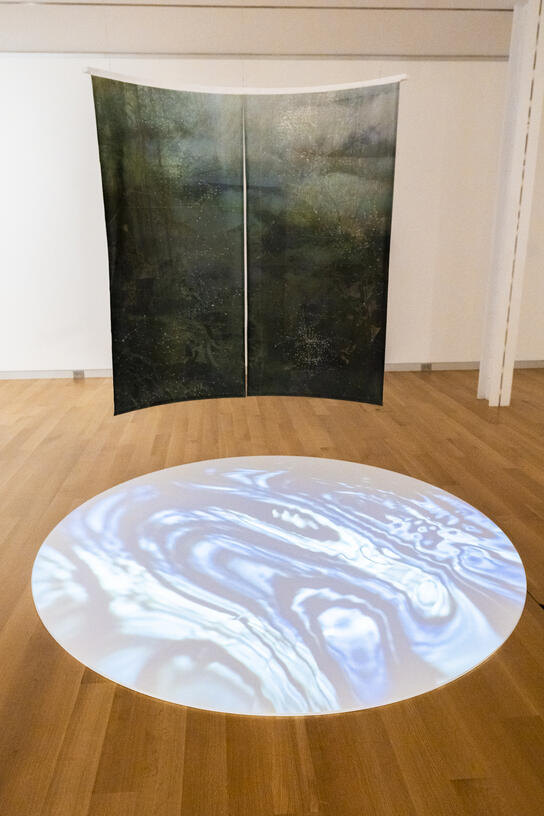Imani Jacqueline Brown
Imani Jacqueline Brown's installation What remains at the ends of the earth? looks at the history of land occupied by Black Louisianans. The artist shows how oil plants, pipelines, and wells often sit where plantations and memorials to the ancestors of enslaved peoples are located. This link ties the petrochemical industry to the plantation economy. By connecting past injustices to today’s environmental problems, Brown’s work calls for restoring landscapes and providing economic reparations. What remains at the ends of the earth? highlights both exploitation and resistance in Louisiana. The state's extensive oil and gas networks harm fragile ecosystems. Magnolia and willow trees, planted by enslaved people, represent memory as well as ecological recovery.
More from the artist
In the coastal wetlands of the US state of Louisiana, the fossil fuel industry reigns as heir to the extractive logics and landscapes of settler colonialism and slavery. Oil and gas corporations have dredged 10,000 miles of canals to drill and access 90,000 wells, which connect through 50,000 miles of pipeline to over 200 plants in the “Petrochemical Corridor.” This invasive infrastructure severs the integrity of Louisiana’s more-than-human ecologies. Canals kill the vegetation that holds sediment together as land; since the 1930s, 2,000 square miles of wetlands have disintegrated into the sea.
This place is known by many names: Named for the corset of slave plantations that strangle the Mississippi River, it is known as “Plantation Country.” Infamous for producing the most toxic air in the US, it is known as “Cancer Alley.” Residents knew the region first as ‘home.’ And once it was part of a region known by two dozen indigenous nations as ‘Bulbancha,’ meaning land of many languages. For how much longer will this land be known?
And still, while this land holds the accumulations of 300 years of extractive violence, it also supports its repair. Historically enslaved people planted magnolia and willow trees to mark the graves of their loved ones, retaining a pan-African tradition. Today, their carefully cultivated microecologies conspire with Black activists to resist the continuum of extractivism to the ends of the earth and beyond.
This work is the outgrowth of a larger artist-activist research project into fossil fuel infrastructure in Louisiana’s coastal zone. Follow the Oil maps the fossil fuel production cycle from points of extraction to points of emissions, following the flow of oil through a single pipeline, and reveals the foundation of colonialism and slavery upon which the fossil fuel industry stands.

Imani Jacqueline Brown. What remains at the ends of the earth?, 2022. Dimensions variable. Installation view, MassArt Art Museum, 2024. Photo: Melissa Ostrow.